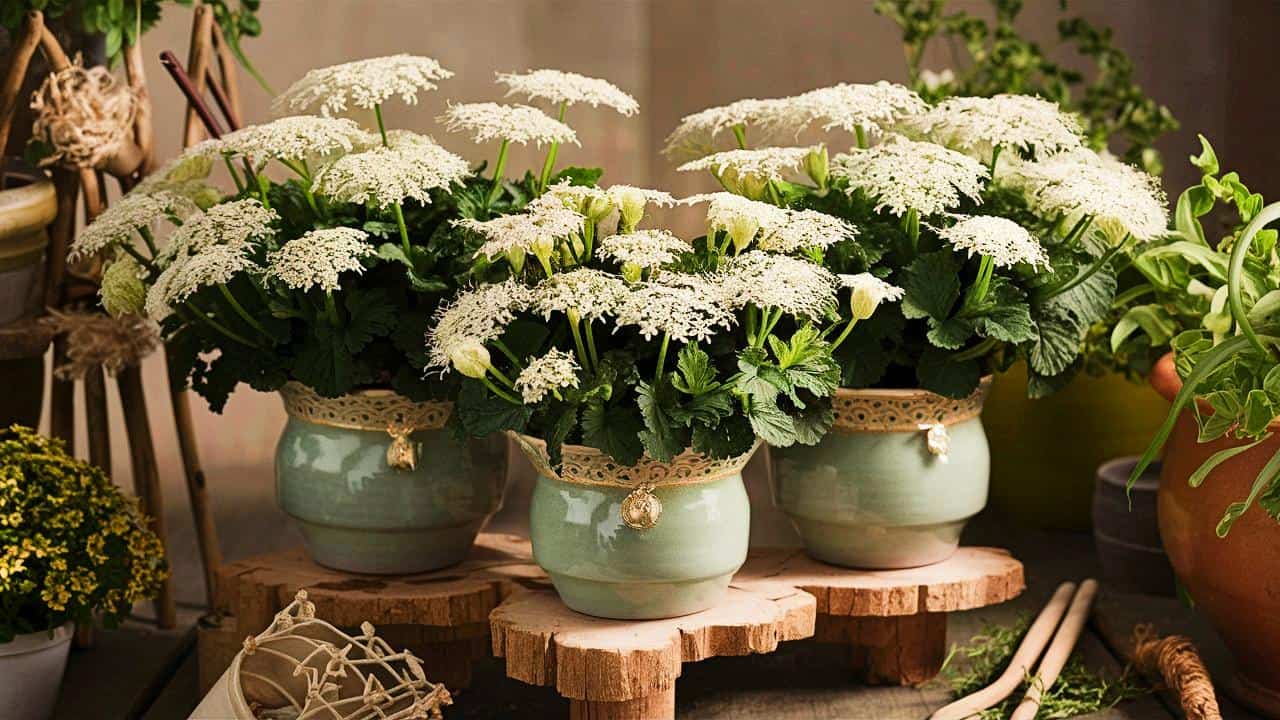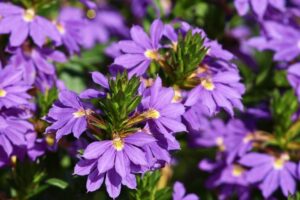Queen Anne’s Lace (Daucus carota), also known as wild carrot, is a delightful and versatile plant known for its lacy white flowers and feathery foliage. Although often found in wild meadows and along roadsides, Queen Anne’s Lace can be successfully cultivated in pots, bringing a touch of natural elegance to your garden, balcony, or indoor space. This comprehensive guide will walk you through everything you need to know about growing Queen Anne’s Lace in pots, from selecting the right container to ensuring your plant thrives.
Understanding Queen Anne’s Lace
Botanical Background
Queen Anne’s Lace is a biennial plant in the Apiaceae family, the same family as cultivated carrots. In its first year, it forms a rosette of leaves, while in its second year, it produces tall stems topped with umbels of tiny white flowers. The plant gets its name from the delicate, lace-like appearance of its flowers, which are said to resemble the lace made by Queen Anne of England.
Benefits of Growing Queen Anne’s Lace
Aesthetic Appeal: The intricate flowers and airy foliage add a touch of elegance to any setting.
Wildlife Friendly: The flowers attract beneficial insects, including bees and butterflies.
Versatility: Can be grown indoors or outdoors, in gardens or containers.
Low Maintenance: Once established, they require minimal care and are quite resilient.
Selecting the Right Pot
Size and Material
When choosing a pot for Queen Anne’s Lace, consider the following:
Size: Opt for a pot that is at least 12 inches in diameter and depth to accommodate the plant’s taproot and spread.
Material: Terracotta pots are ideal as they provide good aeration and drainage. However, plastic or ceramic pots can also work if they have sufficient drainage holes.
Drainage
Good drainage is crucial for Queen Anne’s Lace, as the plant does not tolerate waterlogged soil. Ensure your chosen pot has multiple drainage holes at the bottom. You can also improve drainage by adding a layer of gravel or broken pottery pieces at the base of the pot.
Soil and Planting
Soil Composition
Queen Anne’s Lace thrives in well-draining soil with a neutral to slightly alkaline pH (6.0 to 7.5). A mix of standard potting soil with added perlite or sand works well to ensure proper drainage and aeration.
Planting Seeds
Timing: Plant seeds in early spring or fall. If starting indoors, sow seeds 4-6 weeks before the last frost date.
Sowing: Scatter seeds thinly on the soil surface and cover lightly with a thin layer of soil or compost, as they need light to germinate.
Watering: Water gently to keep the soil moist but not waterlogged. Germination typically occurs within 2-3 weeks.
Care and Maintenance
Light Requirements
Queen Anne’s Lace prefers full sun but can tolerate partial shade. Ensure your potted plant receives at least 6 hours of direct sunlight each day for optimal growth.
Watering
Water your Queen Anne’s Lace regularly to keep the soil consistently moist, especially during dry spells. However, allow the top inch of soil to dry out between watering to prevent root rot.
Fertilization
Queen Anne’s Lace is not a heavy feeder. Fertilize sparingly with a balanced, water-soluble fertilizer every 4-6 weeks during the growing season. Over-fertilization can lead to excessive foliage growth at the expense of flowers.
Pruning and Deadheading
Remove spent flowers to encourage continuous blooming and prevent self-seeding. Cutting back the plant after flowering can also promote a more compact growth habit.
Overwintering
Outdoor Plants
In regions with mild winters, Queen Anne’s Lace can be left outdoors. Mulch around the base of the plant to protect the roots from frost.
Indoor Plants
In colder climates, bring the pots indoors before the first frost. Place them in a cool, bright location, such as a sunny windowsill or a greenhouse. Reduce watering during the winter months, allowing the soil to dry out more between waterings.
Pests and Diseases
Common Pests
Queen Anne’s Lace is relatively pest-resistant but can occasionally attract aphids, spider mites, and carrot rust flies. Regularly inspect your plants and treat infestations promptly with insecticidal soap or neem oil.
Diseases
The most common diseases affecting Queen Anne’s Lace are powdery mildew and root rot. To prevent these:
Ensure good air circulation around the plant.
Avoid overhead watering.
Use a well-draining soil mix.
Harvesting and Uses
Harvesting Flowers
Queen Anne’s Lace flowers can be harvested for fresh floral arrangements or dried for crafts. Cut the stems in the morning when the flowers are fully open but before they start to fade.
Culinary and Medicinal Uses
While Queen Anne’s Lace is related to the edible carrot, caution is advised as parts of the plant can be toxic if misidentified or improperly prepared. Historically, the seeds and roots have been used in herbal medicine, but it’s important to consult a professional before use.
Troubleshooting Common Problems
Leggy Growth
Leggy growth usually indicates insufficient light. Move your pot to a sunnier location or provide supplemental grow lights if necessary.
Yellowing Leaves
Yellow leaves can be a sign of overwatering, nutrient deficiency, or pest issues. Check your watering schedule, inspect for pests, and consider feeding the plant if needed.
Lack of Flowers
A lack of flowers may result from over-fertilization or inadequate light. Reduce feeding and ensure the plant receives sufficient sunlight.
Conclusion
Growing Queen Anne’s Lace in pots is a rewarding endeavor that brings natural beauty and beneficial insects to your space. With the right pot, soil, and care, you can enjoy the delicate charm of these lacy flowers whether you have a large garden or a small balcony. By following this guide, you’ll be well on your way to successfully cultivating Queen Anne’s Lace and adding a touch of wild elegance to your home or garden. Happy gardening!





